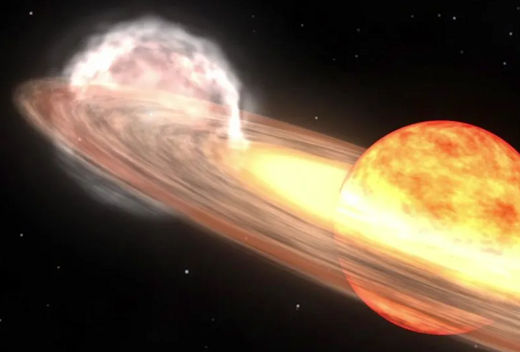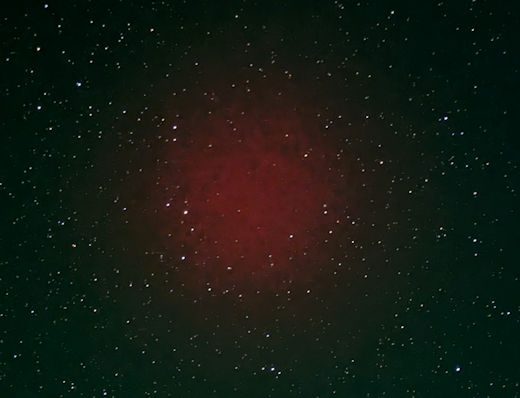June 28, 2024: (Spaceweather.com) By the time you finish reading this story, there could be a new star in the night sky. Recurrent nova T CrB (pronounced “tee-core-bore”) is poised on the knife edge of a once-in-a-lifetime explosion.
“Our best estimate for the time of eruption is close to now,” says Brad Schaefer, Professor Emeritus of Astronomy at Louisiana State University.
Schaefer is a leading expert on T CrB. He’s been studying the star since he was a teenager. “When I was 18 year old, I calculated when T CrB should erupt again, and I’ve been waiting for this moment ever since,” he says.

T CrB is a “recurrent nova.” That means it erupts not just once, but over and over again. Its explosion in 1866 was the first nova astronomers had ever seen in detail. “No one knew what caused it,” says Schaefer. Another blast in 1946 established its period (79 or 80 years) and led researchers to the modern interpretation:
Located 3000 light years away, T CrB is a binary star system consisting of an ancient red giant circled by a hot white dwarf. Hydrogen from the red giant spills onto the surface of the white dwarf. It takes about 80 years to accumulate a critical mass, then–BOOM–a thermonuclear explosion occurs. “It’s an H-bomb that blows up on an incredibly large scale,” says Schaefer.
After an explosion, the process resets and repeats. Looking at old light curves, Schaefer realized that T CrB tells us when it’s about to explode. Approximately 1.1 years before each blow-up, there’s a “pre-eruption dip” in brightness. Amateur astronomers working with the American Association of Variable Star Observers (AAVSO) detected the pre-eruption dip in March 2023:

Above: The pre-eruption dip in March 2023
“If the star behaves in 2023-2024 as it did in 1945-1946, then the next eruption should take place in 2024.4+-0.3,” says Schaefer. “That’s May 2024 plus or minus a few months.”
The explosion will be visible to the naked eye. Schaefer expects it to be about as bright as the North Star (2nd magnitude). When it blows, T CrB will burst forth as an extra jewel in the “Northern Crown” (the constellation Corona Borealis), easy to find high in the summer night sky between Hercules and Bootes.
“T CrB will be the brightest nova for generations,” says Schaefer. “It’s a chance for everyone in the world to step outside, look up, and see the hellfire.”
Observing tips: (1) Tonight, go outside and see what Corona Borealis normally looks like: sky map. Then, when the nova explodes, you’ll be able to tell the difference. (2) Sign up for Space Weather Alerts. All subscribers (Basic and Pro) will receive an immediate text message when the nova explodes.


